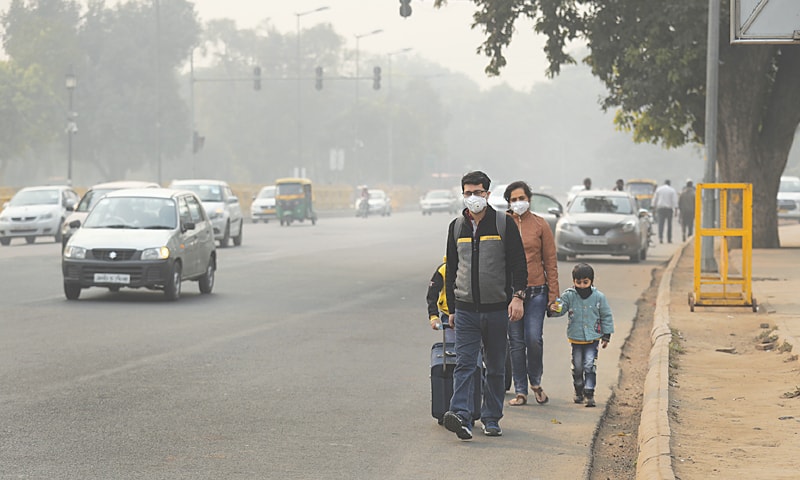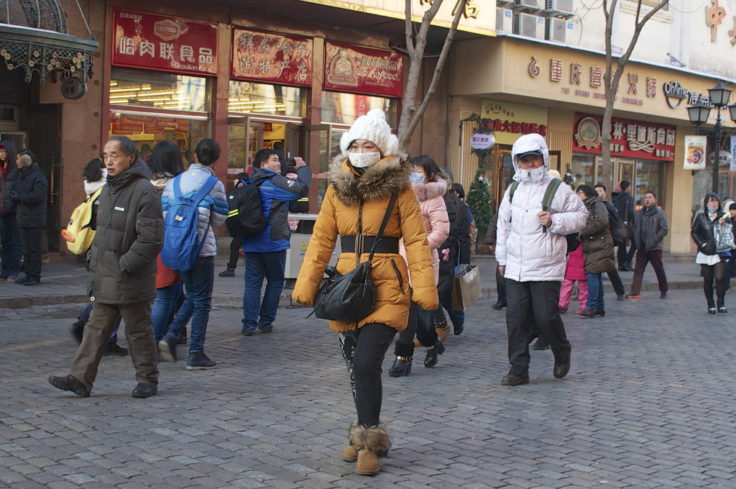
April 08, 2020
The Air Quality Crisis has made the Coronavirus More Deadly
As we learn more about the COVID-19, we see a big range of health outcomes. Now, there is direct evidence that a major risk factor for dying from the disease is long-term exposure to poor air quality. Those living in cities with high levels of fine particulate matter are at greater risk. The transport industry is a major source of this particulate matter. It doesn’t have to be. We have solutions. Maybe now, with the starkness of the virus crisis, we will start using them.
We have long known that our cities are in the midst of a global air quality crisis. According to the World Health Organization, 80 percent of urban residents are breathing air that does not meet standards for health, with middle- and low-income nations suffering from the highest exposures. We already knew that exposure to toxic air pollution may cause a host of health issues, such as heart attacks, premature deaths, delays in early childhood development, asthma, and other health issues. Now it seems that we are adding increased risk of death from COVID-19 to that list.
A Harvard University study, which analyzed 3,080 counties in the United States, using data over 17 years, found that people living in counties that had high levels of air pollution are far more likely to die from the disease than those with lower levels. According to The New York Times, the study found that “just a slight increase in long-term pollution exposure could have serious coronavirus-related consequences, even accounting for other factors like smoking rates and population density.” The study also considered poverty levels, indicating that the impacts of poor air quality alone are significant.


 Although this study only used data from the US, their findings have major global implications. It is notable that the study saw the biggest impact among people with long-term exposure. This indicates that reported short term improvements in air quality due to travel shutdowns will do little to protect the majority of the world who are already at greater risk due to years of breathing polluted air. Cities such as New Delhi and Nairobi, which have far higher rates of particulate matter than US cities, may see even larger death counts. The study “found that a person living for decades in a county with high levels of fine particulate matter is 15 times more likely to die from the coronavirus than someone in a region with one unit less of the fine particulate pollution.”
Although this study only used data from the US, their findings have major global implications. It is notable that the study saw the biggest impact among people with long-term exposure. This indicates that reported short term improvements in air quality due to travel shutdowns will do little to protect the majority of the world who are already at greater risk due to years of breathing polluted air. Cities such as New Delhi and Nairobi, which have far higher rates of particulate matter than US cities, may see even larger death counts. The study “found that a person living for decades in a county with high levels of fine particulate matter is 15 times more likely to die from the coronavirus than someone in a region with one unit less of the fine particulate pollution.”
Solutions from the Transport Sector
The transport sector is a major contributor to fine particulate matter from fuel combustion, in addition to other sources such as refineries and power plants. Breathing in microscopic pollutants damages the lining of the lungs over time, weakening the body’s ability to fend off respiratory infections. Transportation is also the fastest-growing source of global climate emissions. As we move on from this crisis, reducing the transport sector’s contribution to both particulate matter and GHGs must be a top priority. Fortunately, we already have solutions, many of which were in the midst of being put in place when the outbreak hit.
The most effective way to reduce pollutants from the transport sector is by limiting polluting vehicles, especially in dense city centers. More than 200 European cities have recently enacted some form of Low Emission Zones (LEZs), which are policies designed to improve air quality by controlling private cars and freight. They work by either charging high polluting vehicles to enter, or blocking access entirely from certain types of vehicles that do not meet a predetermined emissions standard.

Similarly, congestion pricing, which is being considered by many cities, including New York and Mumbai, would both improve air quality and generate revenue for street improvements and transit that would further reduce emissions. The cities of London, Stockholm, and Singapore have demonstrated congestion pricing successes in air quality and GHGs; London reduced emissions of particulate matter and nitrogen oxides by 12 percent with GHG and carbon dioxide emissions dropped by 20 percent. Singapore’s policies cut emissions by 175,000 pounds of carbon dioxide each day while Stockholm’s congestion pricing decreased GHGs by 14% in its central area. With assistance from ITDP, Mexico City, Rio de Janeiro, Jakarta, and Los Angeles have committed to implementing some form of LEZs or Zero Emission Areas. More than 40 cities around the world have signed onto the C40 Cities’ Green and Healthy Streets, pledging to eliminate fossil fuels from city streets by 2030.
Of course, the best way to improve air quality in cities is to give people better, non-polluting options for short trips. Improving street design for pedestrians leads to fewer car trips, and greater political support for traffic-calming measures. Measures to encourage cycling and other micromobility options, such as accessible bike share and segregated and enforced cycle lanes, along with availability of e-bikes, could make this mode a viable option to replace cars for tens of thousands of trips per day. Prioritizing these modes over private car travel, with a backbone of high capacity mass transit, is the most effective way cities can become resilient in the face of a pandemic, climate change, and crippling traffic congestion.


